SPECIAL OPERATIONS EXECUTIVE (SOE) CREATED
London, England · July 22, 1940
On this date in 1940 the British government created the Special Operations Executive (SOE) organization. For security purposes the SOE was concealed behind the name “Inter-Service Research Bureau.” (At the time the SOE was variously referred to as “the Baker Street Irregulars,” “Churchill’s Secret Army,” or the “Ministry of Ungentlemanly Warfare.”) The SOE was inspired by British Prime Minister Winston Churchill’s fascination with covert intelligence gathering and guerrilla warfare (dating as far back as his 1895 stint as a war correspondent during the Cuban uprising), and it was modeled on the Irish Republican Army (IRA) during the troubles in Ireland (1916–1921).
Perhaps more than any other political leader of his age, Churchill shrewdly valued good intelligence and its wise application to affect the outcome of any struggle; e.g., the use of Ultra (German Enigma decrypts) during the North African campaign and more famously during the Battle of the Atlantic. Hence Churchill’s dual charge to SOE operatives: conduct espionage, sabotage, and reconnaissance in enemy-occupied (or sometimes neutral) Europe, and aid local resistance movements against their Axis occupiers. (Volunteers who were engaged in small- to battalion-size guerrilla operations behind enemy lines were employed in the Special Service Brigade (later British Commandos), which was formed a month earlier, in June 1940. The commandos initially drew recruits from British Army regiments and were led by British Army officers.)
Some 13,000 people from all walks of life, among them 3,200 women, found service in SOE’s research, propaganda, commando, and (mostly) clandestine operations, supporting or supplying roughly one million operatives worldwide. Operation Anthropoid was one of the more famous operations carried out by SOE operatives—the grenade attack on Acting Deputy Reich Protector Reinhard Heydrich in Prague, Czechoslovakia, on May 27, 1942, that mortally wounded him. (The SOE described Heydrich as “probably the second most dangerous man in German-occupied Europe” after Hitler himself.) Heydrich’s death on June 4, 1942, from cardiac arrest stemming from blood poisoning led to a wave of reprisals, including the arrest of 13,000 people, the killing of 5,000 civilians, and the destruction of several Czech villages by German troops.
Men and Women of Britain’s Special Operations Executive (SOE)
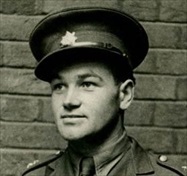 | 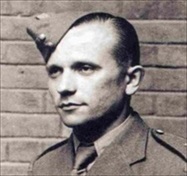 | 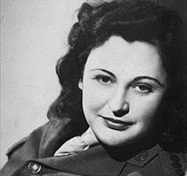 |
Left: Jan Kubiš (1913–1942), one of nine Czechoslovak SOE-trained paratroopers dropped into Czechoslovakia as part of Operation Anthropoid, the daring and successful assassination of SS-Obergruppenfuehrer Reinhard Heydrich, architect of the Holocaust and ruthless overlord of Nazi-occupied Czechoslovakia (Bohemia and Moravia).
![]()
Middle: Jozef Gabčík (1912–1942), a Slovak soldier in Czechoslovakia’s army-in-exile in England. Using an anti-tank grenade Kubiš and Gabčík waylaid Heydrich on May 27, 1942, as he commuted in his open-topped Mercedes-Benz between his home and office in Prague Castle. The killing of Heydrich led to the predictable gory aftermath of Nazi reprisals, including the death of the two Czech patriots as well as the systematic and total destruction of the Czech village of Lidice.
![]()
Right: New Zealand-born SOE agent Nancy Grace Augusta Wake (1912–2011) became a prominent leader of one of the Maquis bands (rural guerrilla bands) of French Resistance fighters. By 1943 she was No. 1 on the Gestapo’s most-wanted-persons list, with a five-million-franc price on her head. From April 1944 to the liberation of France, Wake’s 7,000‑plus maquisards fought 22,000 German SS soldiers, causing 1,400 casualties, while taking only 100 themselves.
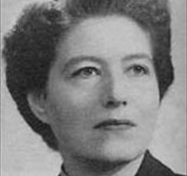 | 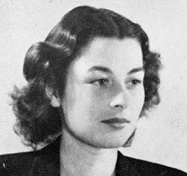 | 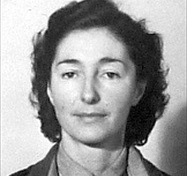 |
Left: Romanian-born Vera Atkins (1908–2000) was the highest-ranking female official in the French section of the SOE, recruiting and inserting hundreds of agents, including 39 female agents, into France. After the war she served as a member of the British War Crimes Commission, gathering evidence for the prosecution of war criminals while also tracing the fate of 118 of her agents who never returned. The French government appointed Atkins Commandeur of the Légion d’Honneur in 1987.
![]()
Middle: A widow after her husband, a captain in the French Foreign Legion, died at El Alamein, Violette Szabo (1921–1945) was recruited into the SOE. Parachuted deep into France on June 7, 1944, her second trip there (her first had been to Cherbourg in April 1944), she was tasked with coordinating the work of the local Maquis in the Limoges area in the first days after D-Day. She was captured by the German SS, handed over to the Gestapo in Paris where she was interrogated and tortured, and then sent to Ravensbrueck, the notorious women’s concentration camp in Northern Germany, where she was executed in January 1945. She was only 23. For her courage she was posthumously awarded the George Cross and the French Croix de Guerre.
![]()
Right: Polish-born Christine Granville (1908–1952) was said to have been Churchill’s “favorite spy.” She became a British agent months before the SOE was founded in July 1940 and was one of the longest-serving of all of Britain’s wartime women agents. Parachuted into Southeastern France a month after D-Day, Granville worked to link Italian partisans and the French Maquis for joint operations against the Germans in the Alps and induce non-Germans, especially conscripted Poles, in the German occupation forces to defect to the Allies. Her exploits were recognized with the George Medal, the Croix de Guerre, and the Order of the British Empire (OBE).
Gladiators of World War II: Britain’s Special Operations Executive (May want to skip first 45 seconds.)
![]()

 History buffs, there is good news! The Daily Chronicles of World War II is now available as an ebook for $4.99 on Amazon.com. Containing a year’s worth of dated entries from this website, the ebook brings the story of this tumultuous era to life in a compelling, authoritative, and succinct manner. Featuring inventive navigation aids, the ebook enables readers to instantly move forward or backward by month and date to different dated entries. Simple and elegant! Click
History buffs, there is good news! The Daily Chronicles of World War II is now available as an ebook for $4.99 on Amazon.com. Containing a year’s worth of dated entries from this website, the ebook brings the story of this tumultuous era to life in a compelling, authoritative, and succinct manner. Featuring inventive navigation aids, the ebook enables readers to instantly move forward or backward by month and date to different dated entries. Simple and elegant! Click 











